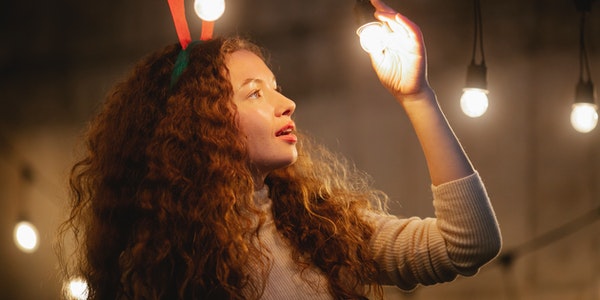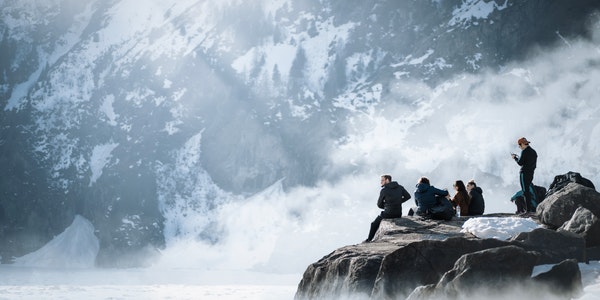Why film use light is worth learning from graphic photographers
When photography was just born, there was no film technology. Some photographers tried to learn from painting and sculpture, while others insisted on finding the unique artistic language of photography. At that time, there was a discussion about whether or not to “imitate”.
Time flies, and there are masters and masterpieces in both categories! All that is left is worship and appreciation. I have also heard an interesting story. A chef developed a highly acclaimed cuisine after appreciating Picasso’s famous paintings. Similar or seemingly unrelated affairs can inspire each other, not to mention “movie” and “photography” with the same roots.
In fact, there is no essential difference between film light and photography light. However, in the process of expressing a motion lens and countless daily life pictures, the film involves creating more complicated changes in light than flat photography; during the continuous and uninterrupted filming period, it is necessary to deal with more troubles caused by the cloudy and sunny sunlight. 
In addition, the film is a team work. The director recreates the script and tells the lighting teacher the atmosphere he wants. The lighting team refines the realization of lighting again, and the photographer expands the lens language from different angles according to the lighting. In the comparison of flat photography, everything is done by the photographer himself. Obviously, the film has more investment, more equipment, more manpower… At least I believe that their energies must have something to learn from.
How should graphic photography learn how to use light in movies?
Movies are dynamic art that tells the stories and emotions of a certain person or group of people in a certain historical period; they have clear characteristics of the times, characters, and emotional atmosphere. The lighting technique used is very different! Either a single element or the whole can be used for reference, so that we can use the right light to create a photo with a sense of story.
- Looking for a sense of the times-movies have the background of the times when the story takes place, and the light atmosphere is the first element to create a sense of the times. The unfolding of the screen immediately draws the viewer into that time and space, and is immersive with the protagonist.
For example, in the movie “Farewell My Concubine”, the use of light is not a single, dull and cold tone, nor is it a completely warm tone. It is somewhere in between. On the one hand, it can express the decline of the old Chinese era. On the other hand, it uses enough warm colors to make the characters look non-uniform, with blood and emotions.
For example, in the early Hong Kong films, in order to create the chivalrous and romance in the ancient martial arts films, there were often obvious traces of smoke when they were used up. When the light passes through the occlusion of doors and windows, a beautiful beam of light is generated in the picture, which seems to bring the audience into the mysterious and fascinating old society.
For example, in the movies of Audrey Hepburn’s era, it can be observed in the rich and delicate black and white layers that there are modifiers portraying the hair and contours, so the faces of the characters will form a beautiful three-dimensional contrast. The overall picture creates a strong sense of classical beauty.
If you also want to shoot a set of works with a certain era background, these light details will be a very good reference template.
- Characters emotions-the plot of the story promotes the emotions of the characters, and further words can be used to imply the changes in the characters’ hearts.
For example: the heroine is in her bedroom, lying lazily on the bed listening to music or whispering in the ears of her lover. At this time, the light on the scene is usually displayed with soft lighting and peaceful excess.
For example: a guy who comes home late at night, the alarm clock rings in the morning, and he reluctantly opens his eyes. The lighting engineer will use a stronger direct light to simulate the glare of the morning sun to emphasize the protagonist’s sense of resistance to the matter of getting up.
- Impetus to the story-use the change of light to intervene in narrative and character creation.
For example: the movies before the 70s were lighting with actors at the core, and aesthetic modeling was the mainstream. Until the appearance of the movie “The Godfather”, the light began to fully intervene in narrative and character creation. In the movie, the old godfather uses the “underexposed top light” from beginning to end. The audience has never seen his eyes clearly, and always gives people the impression of mystery and inability. Another character, Michael Corleone, used light metering and even smoothing when he appeared on the field to shape his simple and flat personality during this period.
As the plot progressed, bad things in the family followed one after another, and a large number of shadows and contrasts appeared on the faces of the characters, portraying the contradictions and conflicts in the characters’ hearts. Until the end of the story, he became the “godfather” of a new generation, and the familiar “underexposed top light” appeared in the picture again. This case tells us that according to the progression of the plot, targeted light changes will effectively improve the narrative of the entire set of works.
All in all, once again understand from the movie, light is not simply lighting or beautifying characters. If you are ready to start practicing, it is recommended to start with the character’s emotions as a breakthrough point, and then gradually advance, and then pursue the expression of inner emotions and desires with light. Of course, practicing this high level of light consumption requires a deeper artistic understanding and life insight.
